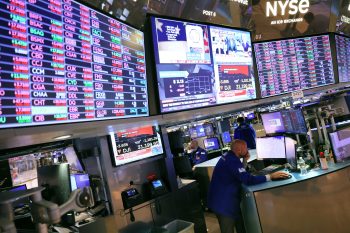Fed hopes auction will get things moving
TEXT OF STORY
KAI RYSSDAL: Ben Bernanke’s wish list for how to fix what ails the economy’s probably pretty long. But somewhere right near the top would be to have Wall Street banks start lending again. The Federal Reserve figures that if they begin to spread the wealth, to each other and to other investors, then slowly but surely the credit markets will loosen up.
Making that happen takes confidence, and it takes money. The Fed tried to take care of the second half of that equation today by pumping another $75 billion into the frozen credit markets. It was the first auction of loans to investment banks that was promised as part of the bailout of Bear Stearns. As to the first part of the equation, the trust part? We’re gonna have to see about that, as Marketplace’s Jill Barshay reports from New York.
JILL BARSHAY: The Fed’s move amounts to a big swap with Wall Street. The Fed exchanged $75 billion of Treasury notes for unpopular mortgage securities owned by the big investment banks. Lou Crandall is chief economist at Wrightson ICAP.
LOU CRANDALL: Market participants get a highly liquid security that everyone has confidence in. The Fed temporarily warehouses the less liquid securities.
Crandall says the Fed dreamt up this fix a few weeks ago when the investment banks stopped lending to some of their customers. That included hedge funds who invested in mortgage-backed securities.
Crandall: They were having to liquidate. And that resulted in a huge glut of mortgages on the market and a back-up in interest rates for the few home buyers who were still out there.
Crandall says the Fed wants to encourage investment banks to lend to their customers again. And it hopes that will stop mortgage securities from free-falling.
Vincent Rinehart is a monetary policy expert at the American Enterprise Institute. He welcomes this liquidity injection and says it might have helped Bear Stearns stay in business — if it had come sooner. Rinehart says the Fed has been looking for ways to ease the credit crisis since the end of last year.
Vincent Rinehart: Add them all up, these programs total $400 billion. That’s almost half the Federal Reserve’s balance sheet.
Rinehart says these new programs are Band-Aids, not solutions. He says if the mortgage market isn’t fixed, Wall Street will need to find fresh capital from outside investors.
In New York, I’m Jill Barshay for Marketplace.
There’s a lot happening in the world. Through it all, Marketplace is here for you.
You rely on Marketplace to break down the world’s events and tell you how it affects you in a fact-based, approachable way. We rely on your financial support to keep making that possible.
Your donation today powers the independent journalism that you rely on. For just $5/month, you can help sustain Marketplace so we can keep reporting on the things that matter to you.


















